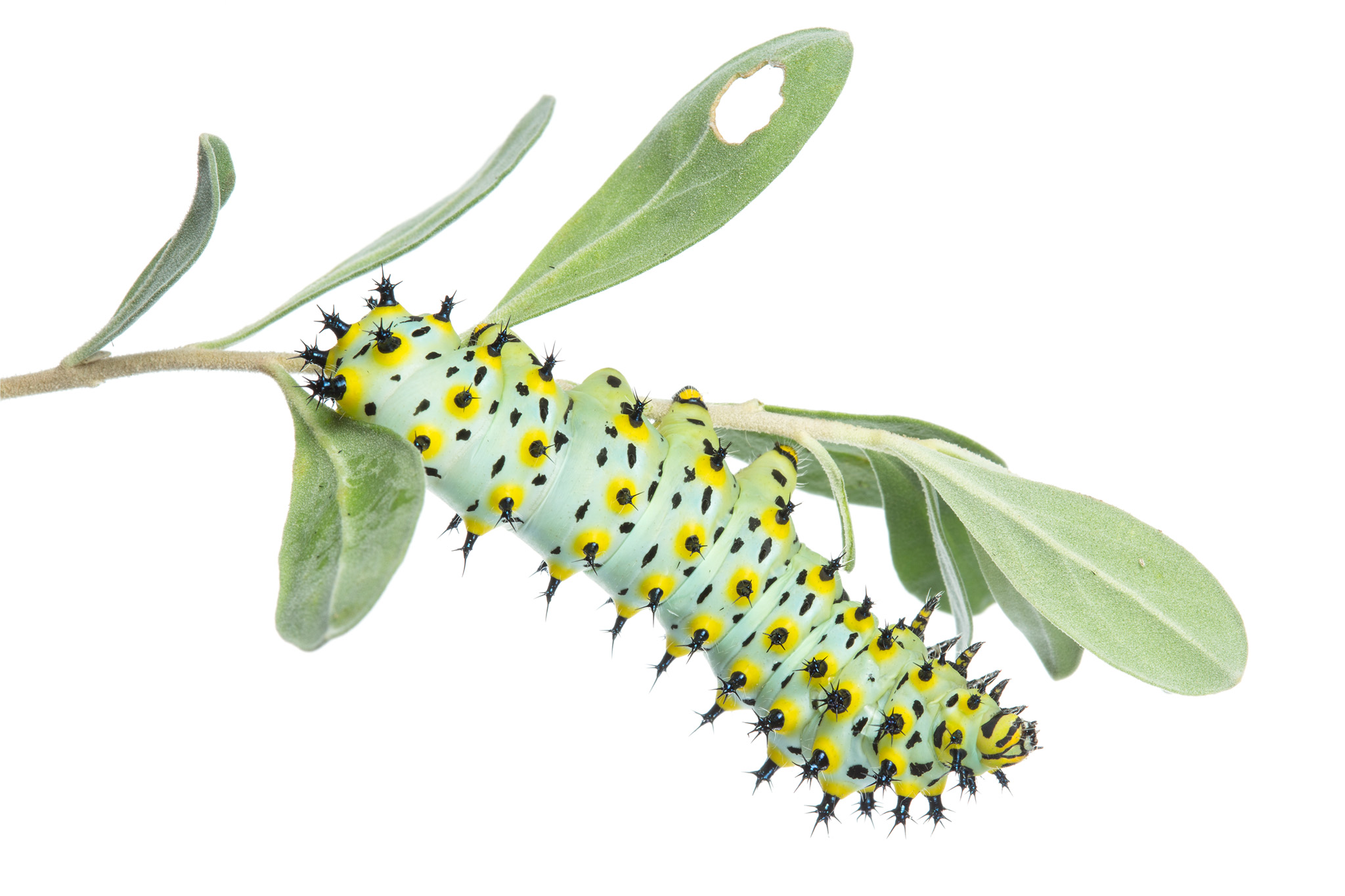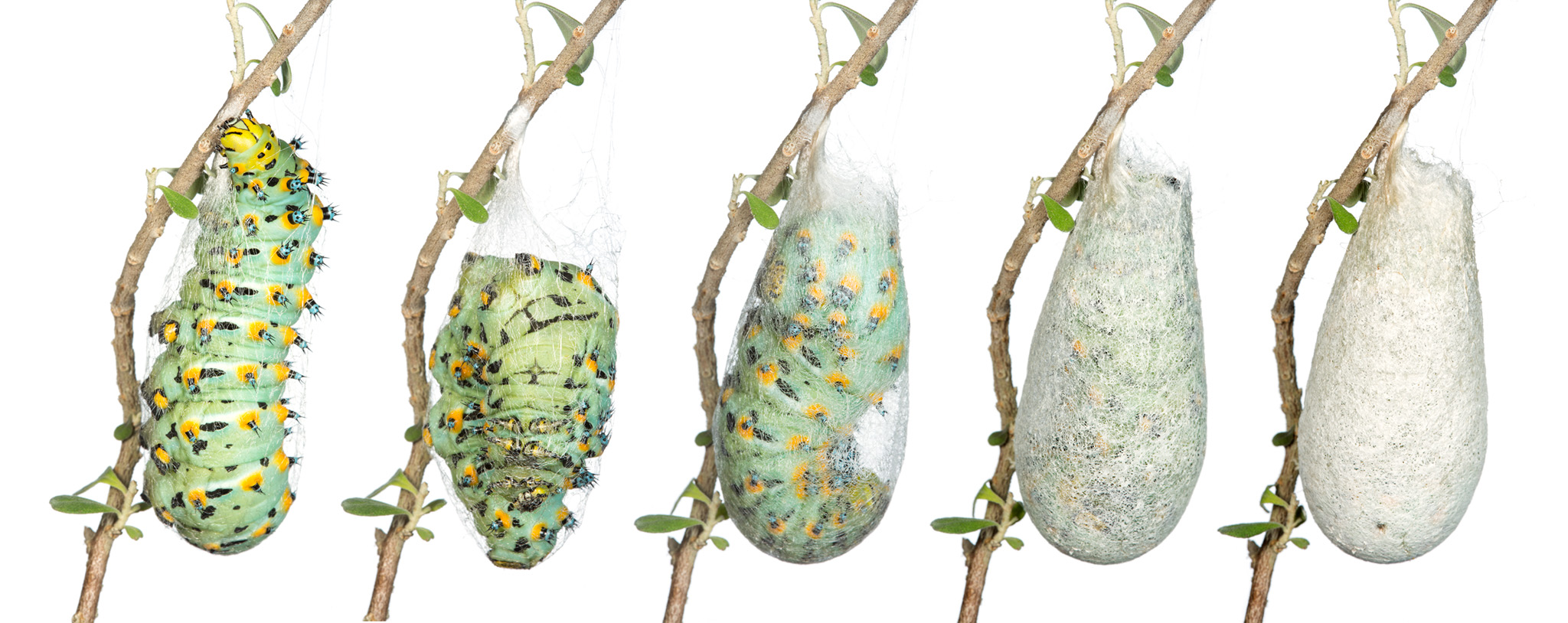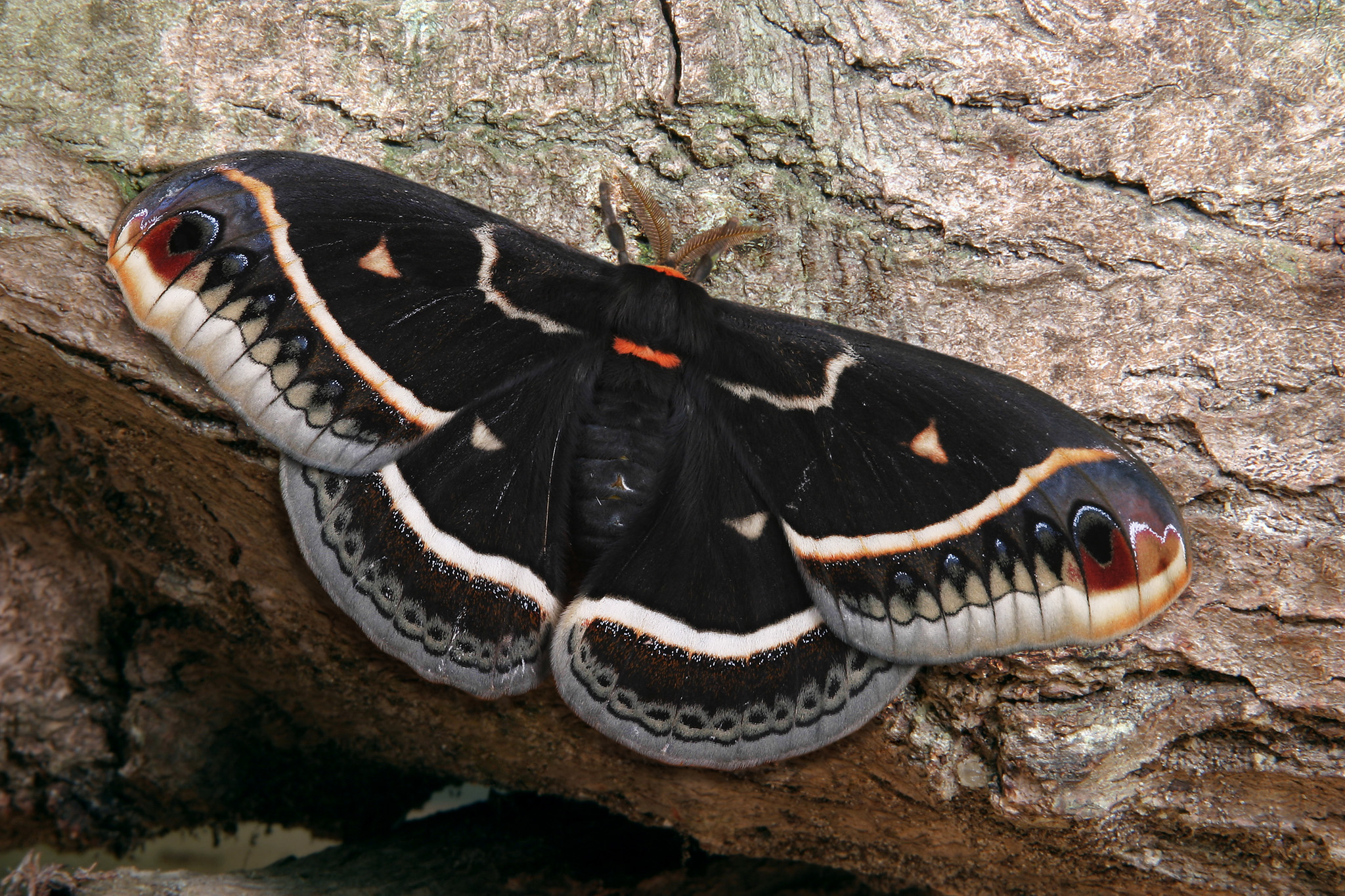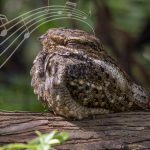More than just a perfect hideaway, cenizo’s stems and silvery-green leaves are also savory sustenance for these harmless, low-key larvae.
When it comes to Bexar County native plants, few are as immediately recognized or appreciated as cenizo (Leucophyllum frutescens). Also known as Texas sage, cenizo’s extreme drought-tolerance, soft, silvery green leaves, stunning fuchsia flowers, and surprising lack of sharp-pokey things (unlike so many other south Texas plants) make it a favorite addition to many San Antonio landscapes.

But here’s something few people realize about cenizo: it’s a favorite host plant of the Calleta silkmoth (Eupackardia calleta).
While seldom seen, these large, showy moths are quite common to our area and have a truly amazing life cycle. Eggs are laid in small groups on the stems and leaves of the cenizo. Once the caterpillars hatch they begin feeding gregariously for the first couple of weeks, but they eventually become more solitary as they grow larger. At this point, the soft green, yellow and blue-ish coloration of the caterpillars make for perfect camouflage against the similarly colored leaves of the cenizo.

Within a few weeks, the caterpillars grow impressively large and begin to search out a sturdy branch. Using special spinnerets located near their mandibles, the caterpillars anchor themselves and weave an intricate silken cocoon around their bodies. Once completely sealed inside this cocoon, the caterpillar undergoes its final molt and hardens into a dark pupa. Within this pupa, the caterpillar’s body shifts and changes as it begins the incredible process of complete metamorphosis.

How long this process takes can vary greatly. Some moths emerge within a few months whereas others can take as long as two years to crawl from their silken cocoons!
Once emerged, it’s imperative that males and females find each other as quickly as possible as they live only a few days as adults. This is due in part to the fact that adult moths lack mouthparts and cannot feed to replenish the energy expensed while searching for a mate. So with that sense of urgency in mind, after emerging the female begins wafting pheromones into the air. Males, with their large feather-like antenna, can detect these pheromones from miles away and immediately take wing to seek her out. Once mated, the female finds her way to a cenizo where she will lay her eggs and begin the entire process over again.

It’s amazing to think that only a few weeks of these insect’s lives is actually spent actively engaged in the world around them, whereas most of it is passively adrift in a state of metamorphosis.
Luckily, the caterpillars pose no significant harm to our cenizo, so we can welcome them and enjoy the beauty and diversity they bring to our landscapes!




